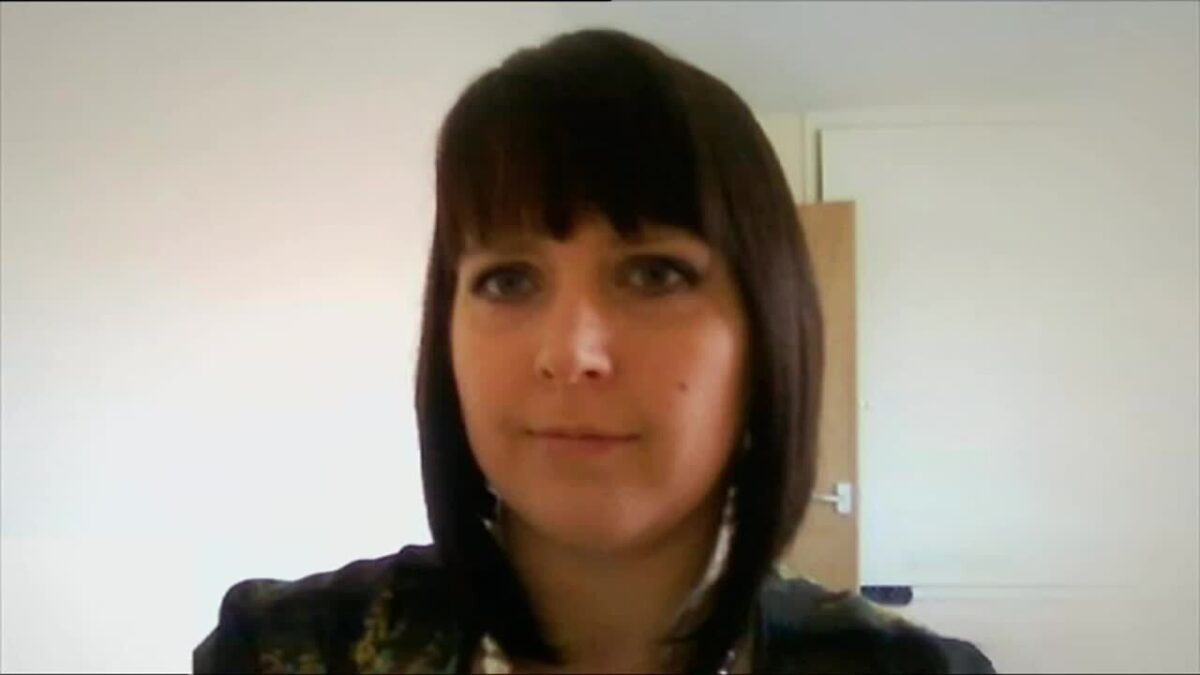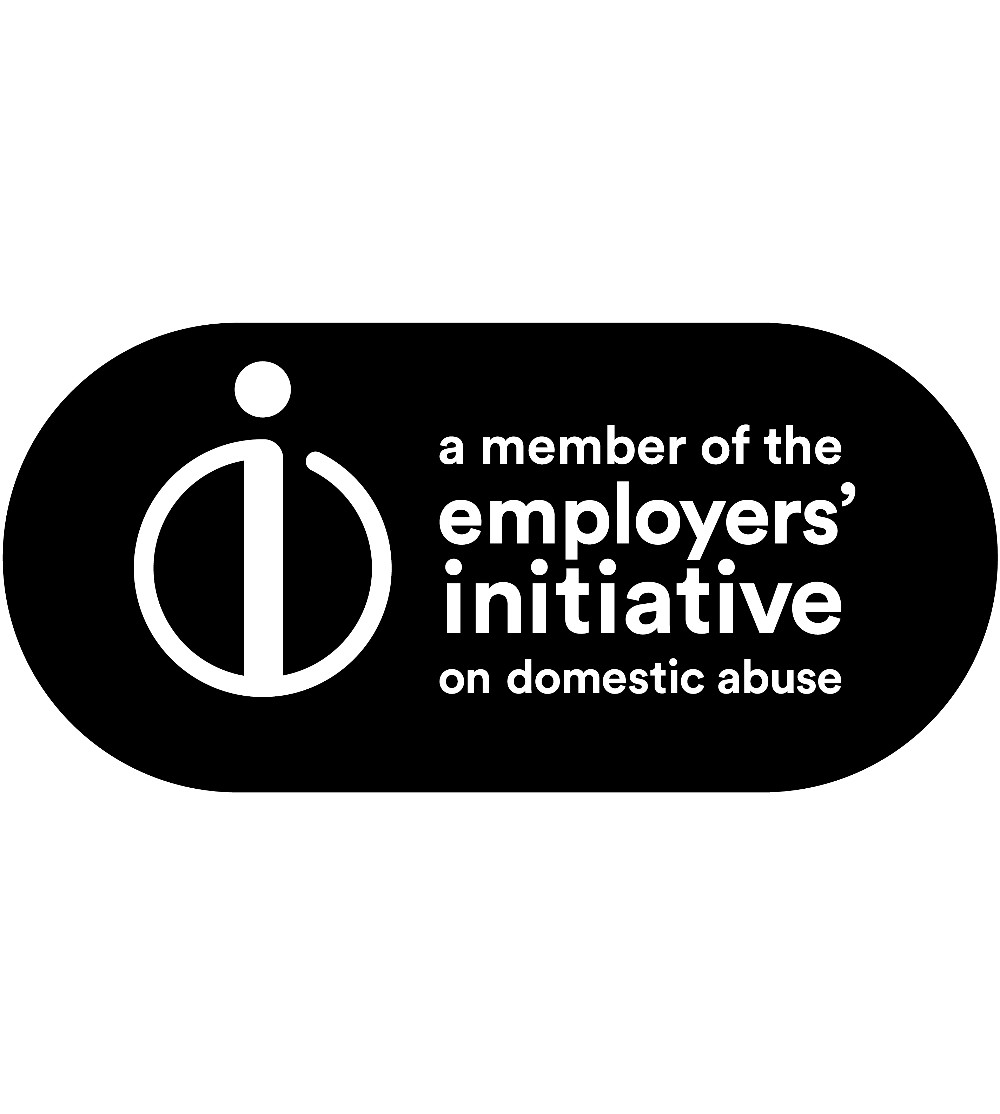One woman loses her life every five days in England and Wales at the hands of current or former partner. Around 2.3 million people aged 16 and over experienced domestic abuse in the 12 months leading up to March 2024 equating to 4.8% of the population in England and Wales. The police recorded 1,350,428 domestic abuse–related incidents and crimes, of which 851,062 were formally classified as crimes in the year ending March 2024.
These stark figures reveal why Clare’s Law, officially known as the Domestic Abuse Disclosure Scheme, proves essential for personal safety and workplace protection.
Clare’s Law enables you to request information about a partner’s potentially violent or abusive past. Named after Clare Wood, who was murdered by her ex-boyfriend in 2009, this scheme represents a fundamental shift in how we approach domestic abuse prevention. Clare never knew about her killer’s history of violence – knowledge that might have saved her life.
The scheme launched nationally across England and Wales in March 2014, following successful pilot programmes in four police force areas. Since its implementation, it has expanded to Scotland in 2015 and Northern Ireland in 2018, helping many people gain crucial information about partners with abusive or violent tendencies.
The evidence clearly demonstrates the scheme’s significance. During the pilot period, 98% of requests concerned at-risk women, reflecting domestic abuse’s gendered nature. National usage demonstrates sustained demand, with 4,724 applications resulting in 1,938 disclosures in the first year alone. Recent data from West Yorkshire shows that 562 requests resulted in 274 disclosures between January and March 2022. Across England and Wales, 30,108 people sought protection through Clare’s Law in the year ending March 2021.
Your understanding of Clare’s Law creates opportunities to support colleagues who might be experiencing domestic abuse. This guide explains how the scheme operates, its limitations, and practical ways to help those who could benefit from this protective measure.
THE STORY BEHIND CLARE’S LAW
Clare Wood’s story demonstrates why workplace domestic abuse awareness matters. Her death in 2009 exposed critical failures by multiple services/authorities in protecting those at risk, failures that Clare’s Law now seeks to address.
THE CASE OF CLARE WOOD
Clare Wood, a 36-year-old mother from Salford, met George Appleton through Facebook in 2009. Their relationship quickly deteriorated from initial promise into harassment, threats, and escalating abuse. Clare ended the relationship, but Appleton refused to accept her decision. On 2 February 2009, he strangled Clare and set her body on fire in her own home before taking his own life.
Clare had repeatedly sought help from authorities. What she never knew proved fatal: Appleton carried convictions for harassment, threats to kill, and kidnapping at knifepoint. Despite Clare’s multiple contacts with Greater Manchester Police about his threatening behaviour, officers never informed her about his dangerous past. This information gap cost Clare her life.
SYSTEMIC FAILINGS IN POLICE RESPONSE
The investigation into Clare’s death revealed devastating flaws in her case handling. An Independent Police Complaints Commission report identified numerous missed opportunities to protect her. Officers classified Clare as “standard” rather than “high” risk, despite clear warning signs. They failed to conduct background checks that would have revealed Appleton’s violent history.
Clare had contacted the police several times before her death, reporting threats, harassment, and break-in attempts. Officers treated these incidents as isolated events rather than recognising an escalating pattern of dangerous behaviour. The inquest concluded that “individual and systemic” failures had let Clare down.
PUBLIC AND POLITICAL REACTION
Clare’s father, Michael Brown, transformed grief into action. Working alongside advocacy groups and Salford MP Hazel Blears, he campaigned for a system giving people the right to know about a partner’s violent history. Their argument proved compelling: if Clare had known about Appleton’s past, she might have made different choices.
This grassroots campaign captured the attention of then-Home Secretary Theresa May. The Domestic Violence Disclosure Scheme was first piloted in 2012 across Greater Manchester, Gwent, Nottinghamshire and Wiltshire. Successful trials demonstrated the scheme’s potential to protect vulnerable individuals, leading to national implementation in March 2014.
Clare’s Law represents a fundamental shift in information sharing. Rather than prioritising potential perpetrators’ privacy, it acknowledges people’s right to information that might protect them from harm. This principle now empowers individuals to make informed decisions about relationships before abuse escalates.
Your understanding of Clare’s story creates opportunities to support colleagues who might be experiencing similar situations. Clare’s Law exists because one woman’s death exposed gaps in protection that workplace domestic abuse awareness can help bridge.
CLARE’S LAW EXPLAINED: WHAT IT IS AND WHY IT MATTERS
Your workplace can become a crucial source of support for colleagues facing domestic abuse. Understanding Clare’s Law enables the provision of appropriate guidance without overstepping professional boundaries.
WHAT IS CLARE’S LAW UK?
Clare’s Law, officially titled the Domestic Abuse Disclosure Scheme, enables you to request information about a partner’s past if you’re concerned that they might be abusive. The scheme operates throughout the UK, having expanded from its 2014 launch in England and Wales to Scotland (2015) and Northern Ireland (2018).
The scheme functions through two distinct mechanisms:
- Right to Ask: Enables individuals to request information about a partner’s history
- Right to Know: Allows police to proactively disclose information to those at risk
Clare Wood never had access to information about her killer’s violent past. The scheme bearing her name ensures others can make informed choices based on facts rather than uncertainty.
THE PURPOSE OF THE DOMESTIC ABUSE DISCLOSURE SCHEME
Clare’s Law exists to prevent harm before abuse escalates. The scheme acknowledges a fundamental principle: you have the right to know if your partner has a history that might put you at risk. Rather than authorities making decisions for individuals, this approach puts crucial information directly into the hands of those who need it most.
The disclosure process strikes a careful balance between safety and privacy concerns. When disclosures are made, they’re typically delivered in person with support services present, ensuring recipients have immediate access to guidance and protection. This thoughtful approach recognises the profound impact such information can have on someone’s life choices.
We believe that empowering people with knowledge creates opportunities to break cycles of violence that often worsen over time. The scheme removes doubt that frequently keeps people trapped in potentially dangerous relationships.
HOW IT SUPPORTS INFORMED DECISION-MAKING
Clare’s Law connects people with specialist support services that help interpret information and develop safety plans when necessary. Information alone isn’t sufficient – people need guidance on practical next steps. This holistic approach ensures recipients understand both what they’ve learned and how to respond appropriately.
For workplace contexts, knowing this resource exists enables you to direct concerned colleagues toward potentially life-saving information. You can provide appropriate support without making assumptions about someone’s situation or pressuring them into specific actions.
The scheme validates concerns people might already have about a partner’s behaviour. Facts replace uncertainty, enabling clearer thinking about relationship safety. This represents a crucial shift in domestic abuse prevention – recognising that information, properly provided, becomes a powerful tool for protection before abuse claims more lives.
HOW DOES CLARE’S LAW WORK?
Clare’s Law operates through two distinct mechanisms that put protective information directly into the hands of those who need it most. Both pathways offer access to potentially life-saving details about a partner’s history.
UNDERSTANDING THE RIGHT TO ASK
The Right to Ask empowers you to formally request information about someone’s abusive past when you’re in a relationship with them. This pathway places control firmly in your hands, enabling you to act on concerns or suspicions about your partner’s behaviour. The process remains confidential – the person being checked won’t know about your inquiry unless disclosure becomes necessary for your safety.
UNDERSTANDING THE RIGHT TO KNOW
The Right to Know represents proactive protection through Clare’s Law. Police can initiate disclosure without a request if they receive information suggesting that someone faces a risk. Officers responding to incidents may discover previous domestic abuse convictions and proactively share this information with a current partner.
STEP-BY-STEP PROCESS OF MAKING A REQUEST
- Making the Request – In person at a police station, by calling the non-emergency number (101), online via some police force websites or through a domestic abuse support agency (who can help you submit it)
- You’ll need to give your details (or the person at risk’s details), explain why you’re concerned (e.g., threatening behaviour, past violence, controlling behaviour) and give any information you have about the person in question
- Initial Safety Check – Within 24 hours, police will check if there’s an immediate risk, take urgent action if necessary (e.g., arrest, safeguarding measures) and contact you to confirm the request and explain the next steps
- Multi-Agency Risk Assessment – Police assess whether sharing information is lawful, necessary, and proportionate under data protection and human rights laws.
They’ll usually consult social services, probation services, domestic abuse charities and sometimes housing or health services. This can take up to 35 days, though urgent cases are prioritised. - Decision & Safeguarding Planning – The panel decides to disclose: If there’s relevant information (e.g., convictions, police intelligence about violent behaviour), and sharing it will help prevent harm or no disclosure: If there’s nothing relevant, or sharing wouldn’t be lawful or necessary
- Regardless of outcome, they will offer safety planning advice and refer you to support services Disclosure Meeting – If a disclosure is made It’s face-to-face, never over email or phone. Only the person at risk (or someone in a safeguarding role for them) will be told. You may have to sign an agreement not to share the information further. You’ll get advice on safety and legal protections (e.g., restraining orders, Domestic Abuse Protection Notices)
WHO CAN APPLY AND WHEN
Anyone in a relationship who has concerns about their partner’s behaviour can access the scheme. It can be used by all gender identities, with the only criteria being that they are over 16. Worried third parties, such as friends, family members, or colleagues, can also apply if they fear for someone’s safety. No minimum relationship length exists; you can make inquiries at any stage if legitimate concerns arise.
WHAT INFORMATION MAY BE DISCLOSED?
Police deciding on disclosure typically share details of relevant convictions or cautions related to domestic abuse. This includes physical violence, controlling behaviours, or threats. Information sharing carefully balances your right to safety against privacy laws. Only details directly relevant to your protection will be disclosed.
Your understanding of these mechanisms enables you to provide appropriate guidance to colleagues who may benefit from Clare’s Law. Knowledge of how to access this scheme could provide a crucial lifeline for someone recognising early warning signs of an abusive relationship.
CHALLENGES AND LIMITATIONS OF CLARE’S LAW
Clare’s Law provides crucial protection, yet several significant challenges limit its effectiveness. Understanding these constraints proves essential when supporting colleagues who might benefit from the scheme.
UNDERREPORTING AND DATA GAPS
The most significant limitation stems from widespread underreporting of domestic abuse. Only an estimated 18% of women experiencing domestic abuse report incidents to police, creating substantial gaps in available data. This reality means many potential abusers remain undetected through the scheme, having never been officially recorded despite their dangerous behaviour.
Clare’s Law relies entirely on previously documented incidents. Without prior convictions or cautions, even the most controlling and manipulative partners appear to have clean records. This dependency on formal reporting creates a dangerous blind spot in the system’s protective capacity.
FALSE SENSE OF SECURITY
Receiving “no information” following a Clare’s Law request creates potential risks. The absence of disclosed information doesn’t guarantee your partner has no concerning history. Police only share information deemed necessary for protection, according to specific risk thresholds, meaning that lower-level concerns may not warrant disclosure.
The underreporting issue compounds this problem. Many perpetrators without prior convictions still pose significant risks to their partners. This incomplete picture could generate a misleading sense of safety, potentially putting individuals at greater risk.
WORKPLACE RELEVANCE: SUPPORTING COLLEAGUES AT RISK
The workplace can be a vital sanctuary for employees experiencing domestic abuse. For many, it may be the only environment where they are physically apart from their abuser and able to access information, resources, and support.
Survivors may be more inclined to disclose their situation to a trusted colleague, manager, or HR representative than to statutory services such as the police. This can be due to fear of repercussions, lack of trust in formal systems, or a preference for a more personal, confidential conversation.
With an estimated 2.4 million adults in England and Wales experiencing domestic abuse each year (ONS), every employer, regardless of sector, has staff who are affected, whether they are aware of it or not. This makes informed, compassionate workplace responses essential for safeguarding wellbeing, retaining talent, and potentially even saving lives.
RECOGNISING SIGNS OF ABUSE IN THE WORKPLACE
Domestic abuse frequently spills into work environments. With 75% of women experiencing abuse targeted at work, recognising warning signs becomes vital for colleague safety.
WATCH FOR THESE POTENTIAL INDICATORS:
- Work performance changes: Unexplained drops in quality, missed deadlines, poor concentration
- Behavioural shifts: Becoming withdrawn, anxious, tearful, or showing unusual agitation
- Communication patterns: Receiving excessive calls/texts with strong emotional reactions
- Physical indicators: Unexplained injuries, changes in clothing style (particularly covering up), altered appearance
- Attendance issues: Increased absenteeism, lateness, or paradoxically, reluctance to leave work
These signs warrant compassionate attention rather than definitive conclusions about someone’s circumstances.
CREATING A SAFE ENVIRONMENT FOR DISCLOSURES
Developing clear domestic abuse policies forms the foundation of practical support. These should outline available support options, confidentiality protocols, and possible workplace adjustments. Creating a culture where employees feel safe discussing concerns proves equally essential.
Key principles when someone discloses include believing them unconditionally, maintaining confidentiality, and acknowledging their courage. Never pressure colleagues into specific actions or express judgment about their situation.
REFERRAL PATHWAYS AND SUPPORT SERVICES
Familiarising yourself with referral options creates effective support networks:
National domestic abuse helplines
- National Domestic Abuse Helpline (Refuge) – 0808 2000 247 (Freephone, 24/7)
nationaldahelpline.org.uk - Domestic Abuse Alliance https://domestic-abuse.co.uk/ Helpline 0800 101 7110
- Men’s Advice Line – 0808 801 0327 (Mon–Fri, various hours)
mensadviceline.org.uk - Galop (LGBTQ+ Domestic Abuse Helpline) – 0800 999 5428 (Mon–Fri, various hours) galop.org.uk
- Karma Nirvana National Honour based abuse helpline – 0800 5999 247 / karmanirvana.org.uk
- Respect Phoneline (for those worried about their own behaviour) – 0808 802 4040 / respectphoneline.org.uk
- Samaritans – 116 123 (Freephone, 24/7 – for anyone in emotional distress)
samaritans.org
Practical workplace support might involve flexible working arrangements, temporary relocation, adjustments to contact details, or developing a “Safety at Work Plan”. Throughout this process, ensure that colleagues maintain control over decisions that affect their safety.
Your awareness of Clare’s Law creates another avenue for protection, potentially offering colleagues access to vital information before abuse escalates.
CONCLUSION
Clare’s Law represents a vital protective tool, despite its limitations. Your workplace awareness of this scheme creates pathways to potentially life-saving information for colleagues experiencing domestic abuse. The Right to Ask and Right to Know mechanisms provide practical routes to crucial knowledge that may prevent the escalation of dangerous situations.
Workplace environments prove essential in supporting those facing abuse at home. Your recognition of warning signs, coupled with sensitive conversation skills and knowledge of Clare’s Law, helps build a sanctuary where colleagues feel secure enough to seek help. Small actions, such as maintaining confidentiality, believing disclosures, or sharing information about available resources, can profoundly impact someone’s journey toward safety.
Clare’s Law is most effective when used as one tool within a broader support framework. Data gaps and inconsistent application across police forces limit their effectiveness. Yet, the scheme still provides valuable protection for those who need it most. Your understanding helps colleagues access information that Clare Wood may not have been aware of, which might have changed her story entirely.
Your role in creating informed workplace responses extends beyond individual conversations. Practical support includes developing clear referral pathways, implementing domestic abuse policies, and fostering cultures where employees feel safe discussing concerns. Employment often provides the financial independence crucial for abuse survivors to rebuild their lives safely.
Clare Wood’s legacy continues through every colleague you support, every conversation you handle sensitively, and every person you guide toward potentially protective information. Your workplace can become that vital space where someone finds the strength and resources needed to take the first step toward safety.
FAQs
Q1. What exactly is Clare’s Law, and how does it work?
Clare’s Law, officially known as the Domestic Abuse Disclosure Scheme, allows individuals to request information about a partner’s potentially violent past. It operates through two main pathways: the Right to Ask, where you can request information, and the Right to Know, where police can proactively disclose information if they believe someone is at risk of harm.
Q2. Who can make a request under Clare’s Law?
Anyone in an relationship who has concerns about their partner’s behaviour can apply. Additionally, concerned third parties such as friends, family members, or colleagues can also make requests if they’re worried about someone’s safety. There’s no minimum relationship length requirement to make an inquiry.
Q3. What kind of information is disclosed through Clare’s Law?
If police decide disclosure is necessary, they typically share details of relevant convictions or cautions related to domestic abuse. This can include information about physical violence, controlling behaviours, or threats. Only information directly relevant to your protection will be disclosed, balancing safety needs with privacy laws.
Q4. Are there any limitations to Clare’s Law that I should be aware of?
Yes, there are several limitations. The scheme relies on previously documented incidents, so it may not capture unreported abuse. Receiving “no information” doesn’t necessarily mean there’s no risk. Additionally, application of the Law can be inconsistent across different police forces, potentially creating a postcode lottery for protection.
Q5. How can workplaces support employees who might benefit from Clare’s Law?
Workplaces can create a supportive environment by developing clear domestic abuse policies, training staff to recognise signs of abuse, and providing information about Clare’s Law as part of broader wellbeing resources. They should also establish confidential referral pathways to support services and offer practical workplace adjustments when needed.








